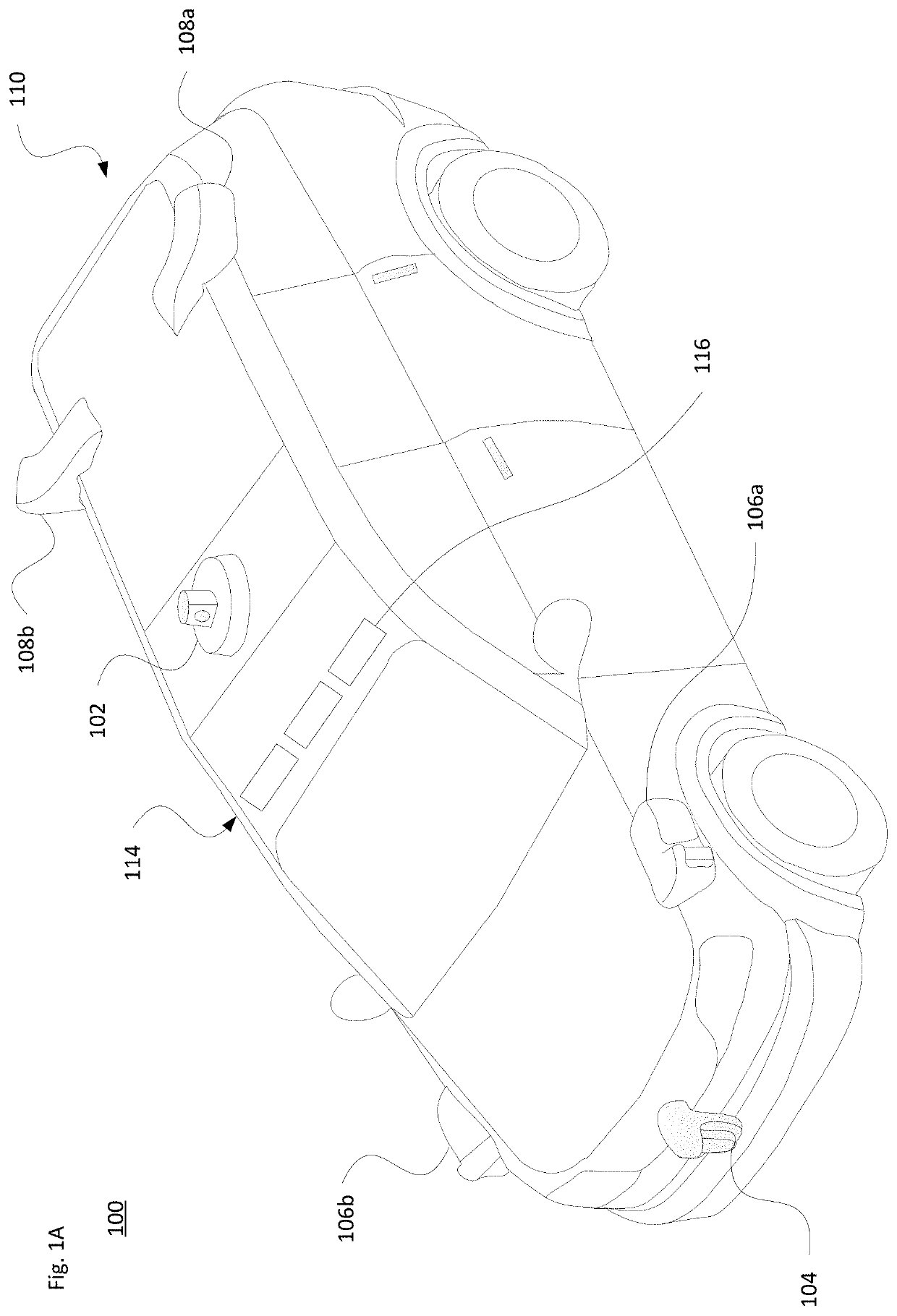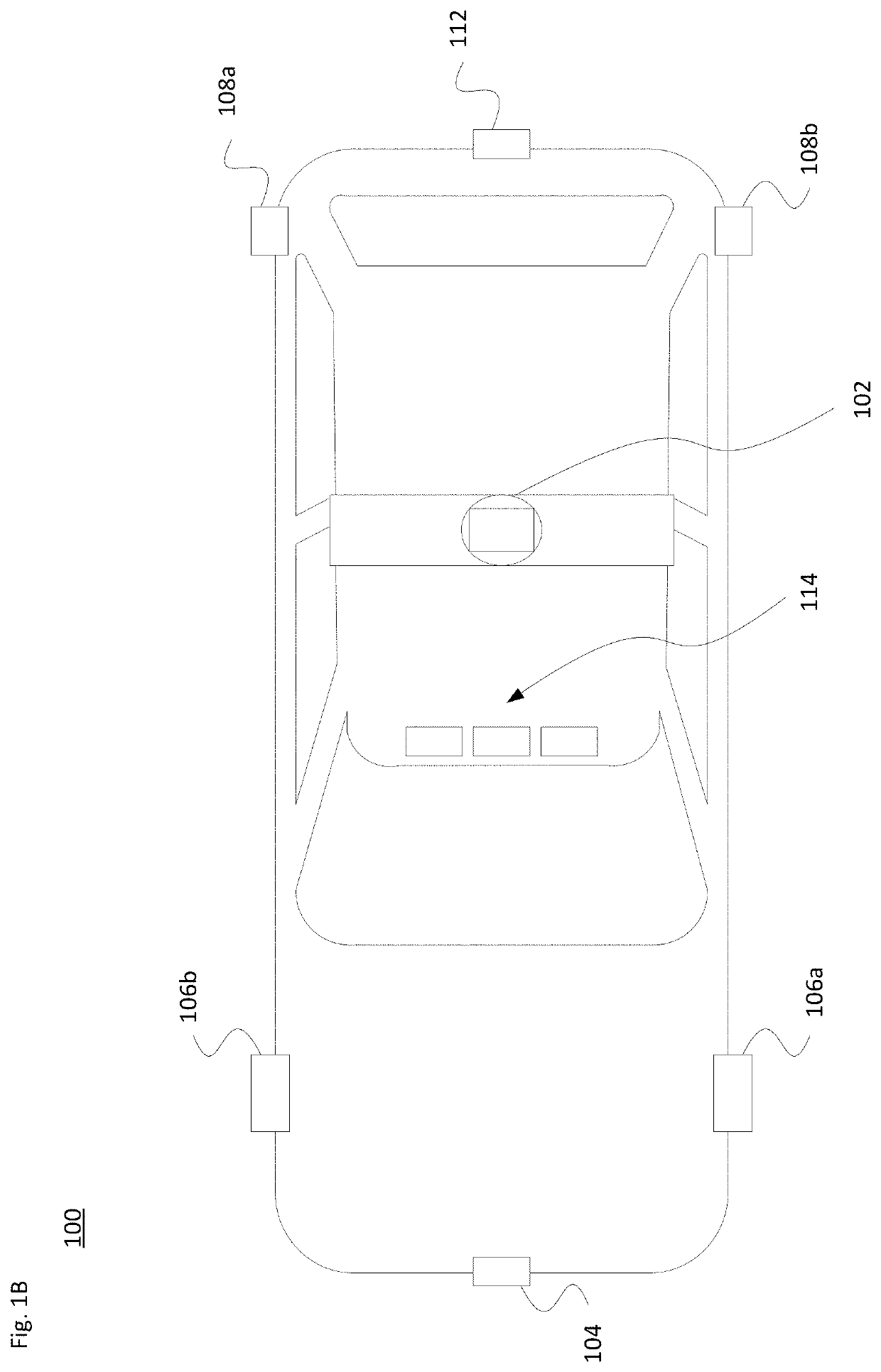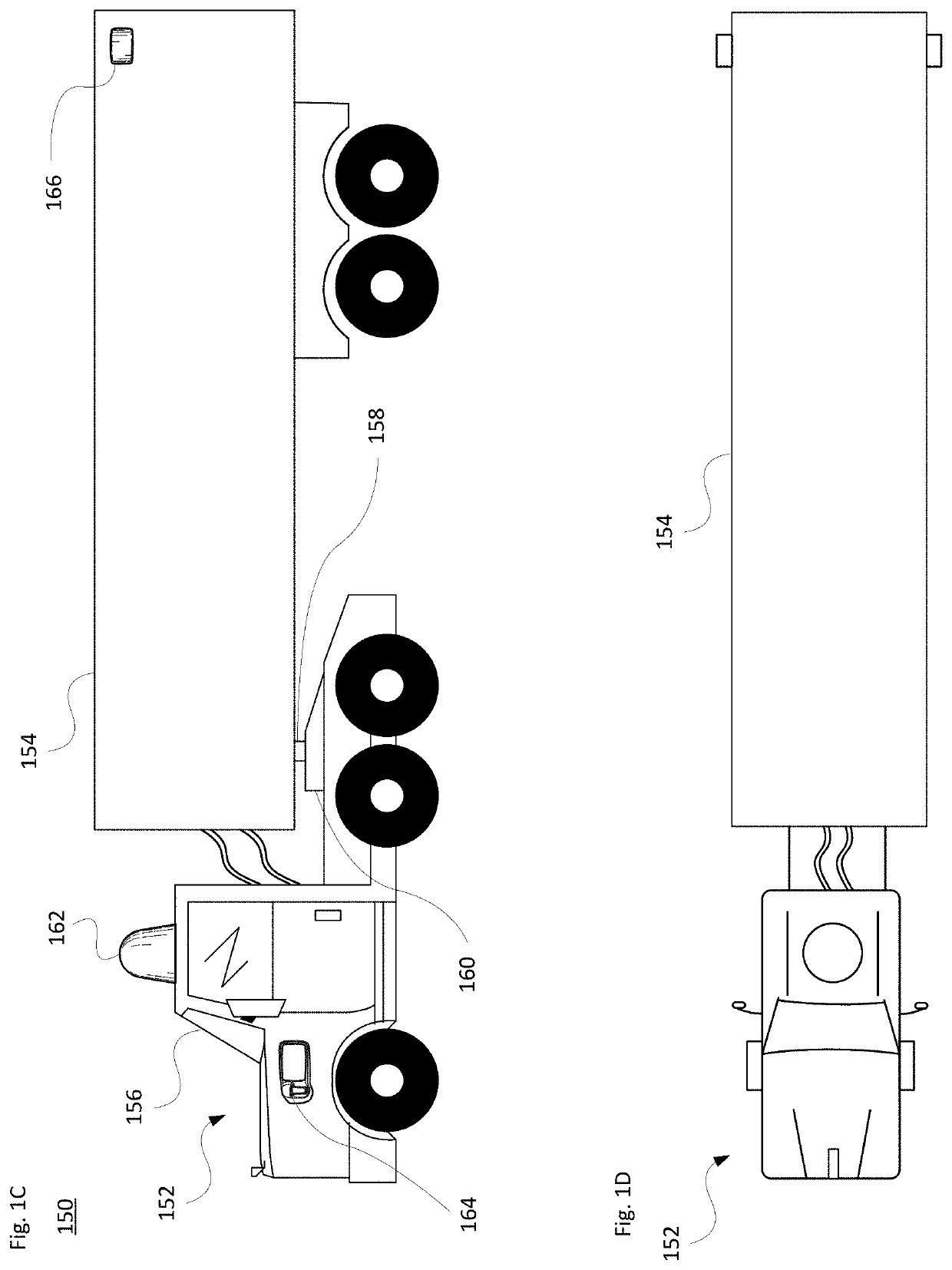Determining wheel slippage on self driving vehicle
a self-driving vehicle and slippage technology, applied in process and machine control, instruments, navigation instruments, etc., can solve problems such as loss of traction, and achieve the effect of reducing the maximum driving speed
- Summary
- Abstract
- Description
- Claims
- Application Information
AI Technical Summary
Benefits of technology
Problems solved by technology
Method used
Image
Examples
example vehicle
Systems
[0033]FIG. 1A illustrates a perspective view of an example passenger vehicle 100, such as a minivan, sport utility vehicle (SUV) or other vehicle. FIG. 1B illustrates a top-down view of the passenger vehicle 100. The passenger vehicle 100 may include various sensors for obtaining information about the vehicle's external environment. For instance, a roof-top housing 102 may include a Lidar sensor as well as various cameras, radar units, infrared and / or acoustical sensors. Housing 104, located at the front end of vehicle 100, and housings 106a, 106b on the driver's and passenger's sides of the vehicle may each incorporate Lidar, radar, camera and / or other sensors. For example, housing 106a may be located in front of the driver's side door along a quarter panel of the vehicle. As shown, the passenger vehicle 100 also includes housings 108a, 108b for radar units, Lidar and / or cameras also located towards the rear roof portion of the vehicle. Additional Lidar, radar units and / or c...
example implementations
[0060]In view of the structures and configurations described above and illustrated in the figures, various aspects will now be described in accordance with aspects of the technology.
[0061]FIG. 4 illustrates a scenario in which vehicle 400 uses sensors 402 and 404 to detect the presence of another vehicle 406. As shown, sensors 402 and 404 have respective fields of view (FOV) 408 and 410 to detect objects in front of vehicle 400. In this example, the sensors 402 and 404 may be, e.g., Lidar, radar, image and / or acoustical sensors.
[0062]Various sensors may be located at different places around the vehicle (see FIGS. 1A-D) to gather data from different parts of the external environment. Certain sensors may have different fields of view depending on their placement around the vehicle and the type of information they are designed to gather. For instance, different Lidar sensors may be used for near (short range) detection of objects adjacent to the vehicle (e.g., less than 2-10 meters), w...
PUM
 Login to View More
Login to View More Abstract
Description
Claims
Application Information
 Login to View More
Login to View More - R&D
- Intellectual Property
- Life Sciences
- Materials
- Tech Scout
- Unparalleled Data Quality
- Higher Quality Content
- 60% Fewer Hallucinations
Browse by: Latest US Patents, China's latest patents, Technical Efficacy Thesaurus, Application Domain, Technology Topic, Popular Technical Reports.
© 2025 PatSnap. All rights reserved.Legal|Privacy policy|Modern Slavery Act Transparency Statement|Sitemap|About US| Contact US: help@patsnap.com



